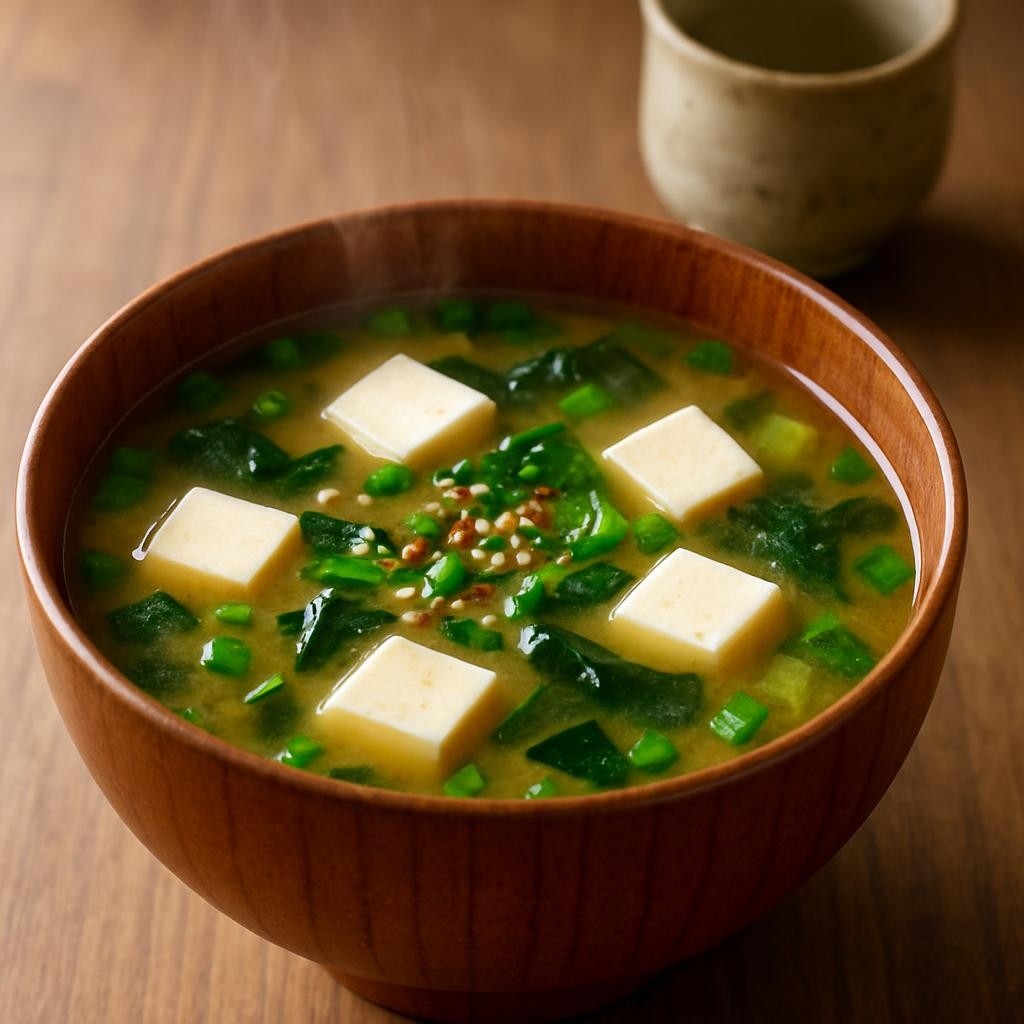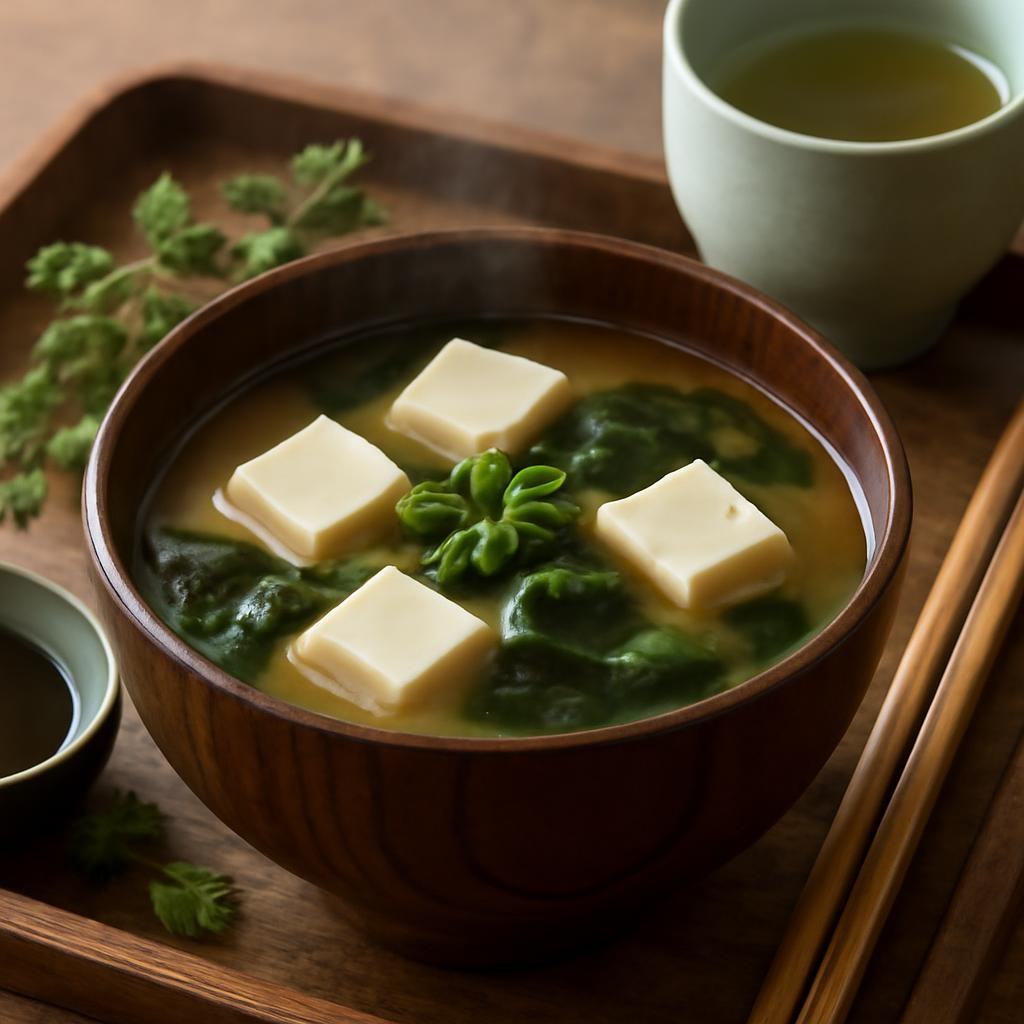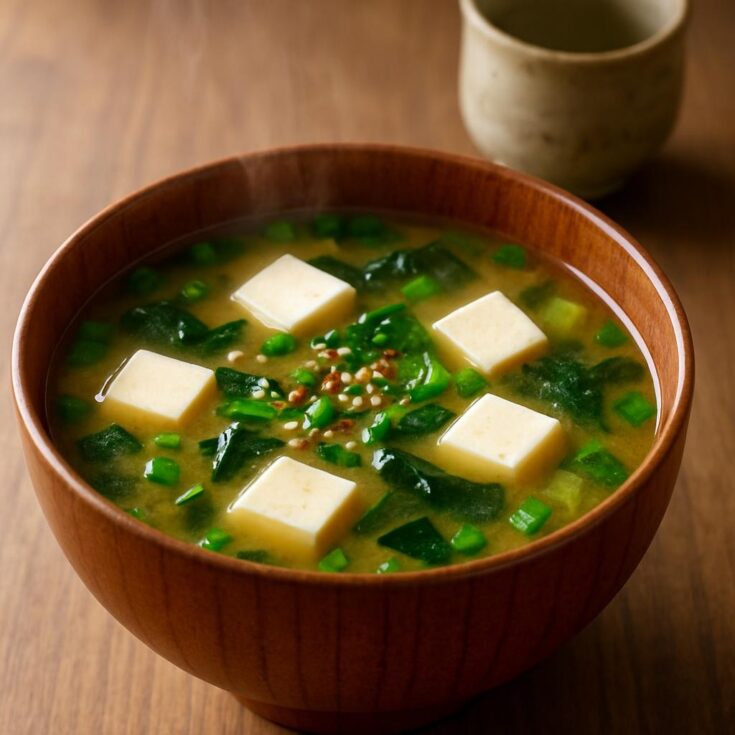Miso soup is a traditional Japanese dish that offers a comforting and umami-rich experience with every spoonful. This warm, savory broth is typically made with miso paste, dashi, and various ingredients like tofu, seaweed, and green onions. Its simplicity and depth of flavor make it a beloved staple in Japanese cuisine and a delightful addition to any meal. Whether you’re enjoying it as a starter or a light main, this miso soup recipe will envelop you in its warm embrace and leave you craving more.

Why You Will Love This Recipe
You will absolutely love this miso soup recipe for its incredible flavor, ease of preparation, and health benefits. The soup is rich in umami, thanks to the miso paste, which is fermented and full of probiotics, making it great for gut health. It can be whipped up in just 20 minutes, making it the perfect quick meal option for busy weeknights or as a soothing dish when you’re feeling under the weather. Plus, it fits beautifully into various dietary lifestyles, being naturally gluten-free and low in calories, perfect for anyone looking to eat healthier without sacrificing taste.
Tips and Tricks
To make your miso soup even more flavorful and enjoyable, consider these tips:
1. Use High-Quality Miso: The flavor of your soup largely depends on the quality of miso paste. Opt for organic, traditional miso for the best results.
2. Dashi Base: For a more authentic taste, prepare your dashi from scratch using kombu (dried kelp) and bonito flakes. However, instant dashi granules are a convenient alternative.
3. Control the Heat: Miso should not be boiled, as high heat can destroy its beneficial properties. Instead, add it to the soup when it’s off the heat or at a low simmer.
4. Customize Ingredients: Feel free to add seasonal vegetables, mushrooms, or proteins like shrimp or chicken for added nutrition and flavor.
Make Ahead Tips
To save time, you can prep several components of the miso soup in advance:
1. Miso Paste: Measure out the miso paste you’ll need and store it in an airtight container in the fridge.
2. Dashi: Prepare a batch of dashi and store it in the refrigerator for up to a week, or freeze it for longer storage.
3. Chop Ingredients: Dice tofu and chop vegetables like green onions and mushrooms ahead of time. Keep them in separate containers in the fridge for easy assembly.
4. Storage: Miso soup is best enjoyed fresh, but if you have leftovers, they can be stored for up to 3 days in the refrigerator.

Recipe Variations
This miso soup recipe can be easily customized:
1. Different Miso Types: Try using red miso for a stronger flavor or white miso for a milder taste.
2. Add Proteins: Incorporate cooked chicken, shrimp, or even edamame for a protein boost.
3. Vegetarian Option: Substitute dashi with vegetable broth for a vegetarian version without losing flavor.
4. Spicy Miso Soup: Add a dash of chili oil or a sprinkle of red pepper flakes for a spicy kick.
How to Serve
Serve your miso soup in a beautiful bowl, garnished with thinly sliced green onions, a sprinkle of sesame seeds, or a dash of shichimi togarashi for extra flavor. Pair it with steamed rice or a side of pickled vegetables to create a fuller meal. The presentation can be enhanced by using wooden or ceramic bowls that evoke the warmth of traditional Japanese dining.

Pairing Suggestions
Miso soup pairs wonderfully with a variety of beverages and side dishes. For drinks, consider serving it with a light green tea or sake, which complements the umami flavors. As for side dishes, try pairing it with sushi rolls, tempura vegetables, or a simple salad with sesame dressing. For dessert, light fruit or mochi can round off the meal nicely.
How to Store
Leftover miso soup can be stored in an airtight container in the refrigerator for up to 3 days. Avoid freezing the soup with tofu and seaweed, as they may lose their texture upon thawing. To reheat, gently warm the soup on the stove over low heat until heated through, ensuring not to boil it.
Equipment Needed
For this recipe, you’ll need:
- A medium-sized pot for cooking the soup
- A ladle for serving
- A whisk or spoon for mixing the miso paste
- A cutting board and knife for chopping ingredients
If you don’t have a whisk, a regular spoon will work fine for mixing the miso paste into the broth.

Dietary Adaptations
To make this miso soup recipe vegan, simply use vegetable dashi or broth instead of fish-based dashi. Additionally, ensure your miso paste is vegan (some are made with fish stock). For those with nut allergies, this recipe is naturally nut-free. Always check labels on store-bought ingredients to confirm they meet your dietary needs.
Seasonal Adaptations
Incorporate seasonal ingredients for a fresher taste. For example:
- Spring: Add fresh asparagus and peas.
- Summer: Incorporate zucchini and corn.
- Fall: Use mushrooms and spinach.
- Winter: Add hearty greens like bok choy or napa cabbage.
Recipe FAQs
1. Can I substitute miso paste with something else?
While miso is key to the flavor, tahini can be used in a pinch, but the taste will differ.
2. How long does it take to make miso soup?
From start to finish, the soup can be ready in about 20 minutes.
3. Can I add other vegetables?
Absolutely! Feel free to include any vegetables you like, such as carrots, broccoli, or radishes.
4. What is the best way to store miso soup?
Store it in an airtight container in the refrigerator for up to 3 days.
How To Make miso soup recipe
Miso Soup

Miso soup is a traditional Japanese dish that offers a comforting and umami-rich experience with every spoonful.
Ingredients
- 4 cups dashi or vegetable broth
- 3 tablespoons miso paste (white or red)
- 1 cup firm tofu, cubed
- 1 cup wakame seaweed, rehydrated and chopped
- 2 green onions, sliced
- Optional: mushrooms, spinach, or other vegetables
Instructions
- In a medium pot, heat the dashi or vegetable broth over medium heat until it’s warm but not boiling.
- In a small bowl, take a bit of the broth and mix it with the miso paste until smooth.
- Once the broth is warm, add the miso mixture back into the pot, stirring well to combine.
- Add the cubed tofu and rehydrated wakame seaweed to the pot.
- Gently heat the soup for another 2-3 minutes, ensuring it does not boil.
- Serve hot, garnished with sliced green onions.
Nutrition Information:
Yield: 4 Serving Size: 1Amount Per Serving: Calories: 155Total Fat: 6gSaturated Fat: 1gTrans Fat: 0gUnsaturated Fat: 4gCholesterol: 2mgSodium: 1226mgCarbohydrates: 12gFiber: 4gSugar: 3gProtein: 16g
Asianplated.com, occasionally offers nutritional information for recipes contained on this site. This information is provided as a courtesy and is an estimate only. This information comes from online calculators. Although allchickenrecipes.com attempts to provide accurate nutritional information, these figures are only estimates.
Final Thoughts
Making miso soup at home is a rewarding experience that brings the flavors of Japan into your kitchen. With its versatility and ease of preparation, you can enjoy this comforting dish any day of the week. Embrace the simplicity, experiment with variations, and savor each spoonful as you explore the delightful world of miso soup. Whether you’re warming up on a chilly evening or looking for a light, nutritious meal, this recipe is sure to become a staple in your culinary repertoire.

